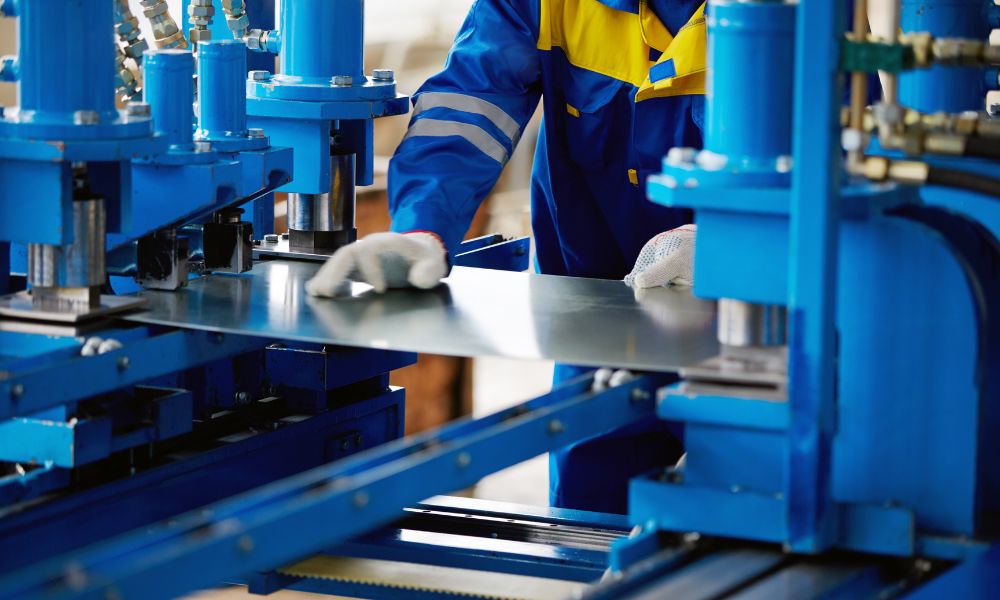A Quick Overview of Sheet Metal Fabrication

Sheet metal fabrication is creating three-dimensional metal objects from two-dimensional metal sheets. This process often includes fabricating components and pieces from sheet metals of various sorts. It’s a versatile method that can produce many different metal parts from materials, including aluminum, steel, stainless steel, copper, and brass.
It is common practice in sheet metal production to use many processes in tandem to create the final product. Let us explain those processes in this quick overview of sheet metal fabrication.
Shear Determination
The fabrication process for sheet metal usually begins with the cutting process. Cutting the metal sheet to size requires specialist equipment like shears or laser cutters.
Cutting happens in three distinct ways: shearing, punching, or blanking. However, sheet metal fabricators also do non-shearing cutting operations. This method is the best option for industrial tasks requiring precise cutting and shorter turnaround times.
Bend and Don’t Break
Bending may produce various angles and forms, from the simplest to those that take many bends. In addition, bending is a low-investment method that may produce high-quantity components of stable quality. Although bending seems easy to the naked eye, it is a sophisticated operation requiring an exceptionally talented fabricator.
A Puncher’s Chance
Various metal sheets benefit significantly from the punching process. Fabricators use a punch of the appropriate size and form to push through a metal sheet, producing a hole of the specified dimensions. And put the die where it will catch the discarded metal from the sheet. Punching makes holes, indentations, and characteristics like dimples and countersinks in the metal sheet.
All’s Well That Ends Weld
Welding is crucial in creating functional, unified components when working with metal sheets. Stick welding, metal inert gas welding, and tungsten inert gas welding are just a few methods.
Welding procedures vary in how they go about melting the edges of the components and adding filler material, but they all accomplish the same goal of putting metal pieces together. This method produces a strong metallurgical link between the components, melting them together.
Fabricators Assemble
Metal fabrication culminates in the assembly stage, allowing intricate metal structures and parts to get produced. Sheet metal fabricators may make superior products that conform to all norms and requirements, provided they use the appropriate processes and procedures.
Mechanical fastening, welding, and adhesive bonding are all viable options for completing the assembly. Mechanical fastening involves using bolts, screws, or any other kind of fastener to combine the metal pieces. Welding forms an irreversible connection between the components, increasing the strength and longevity of the result. For cases where welding is impractical—or weight savings are paramount— adhesive bonding is a popular alternative.
The level of experience and ability required for assembly varies widely. Avoiding problems with the finished product requires carefully and securely assembling all components.
Sheet metal items are very ubiquitous in everyday life. As a result, you may probably find these things everywhere you go, whether it’s your house, office, or store. But with this quick overview of sheet metal fabrication, you get a better appreciation of any custom sheet metal for sale that exemplifies metal production’s longevity, adaptability, and pervasiveness, something of which Thin Metal Sales is a proud part.


